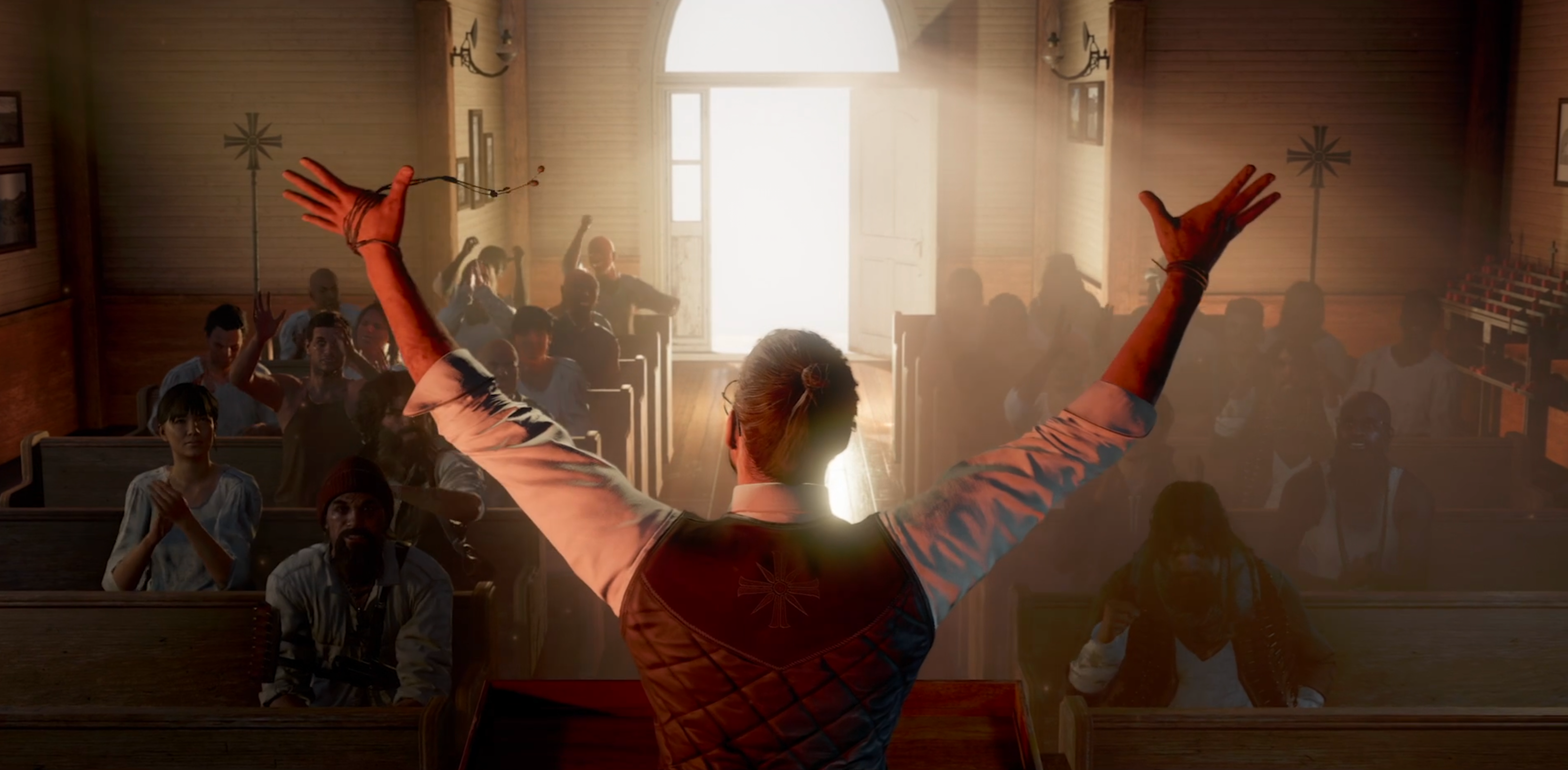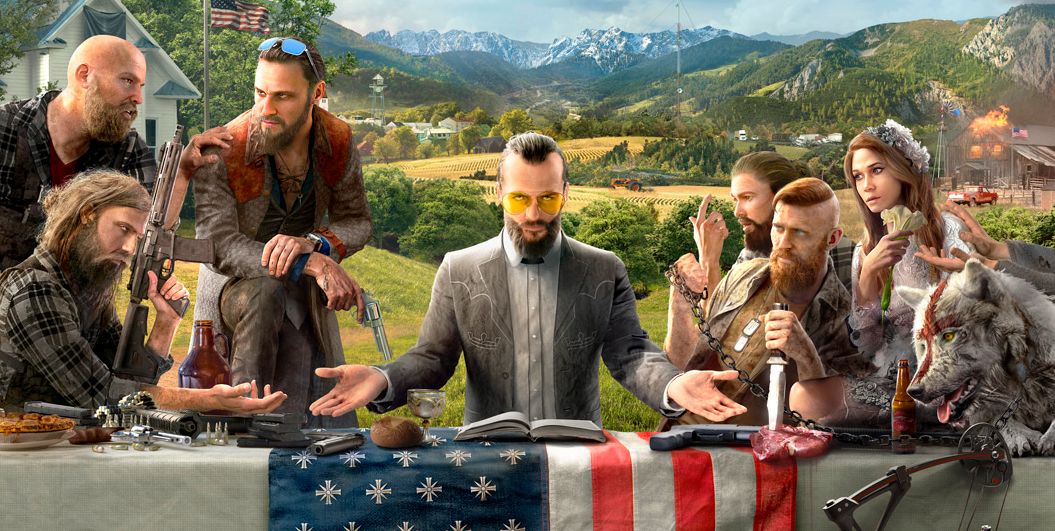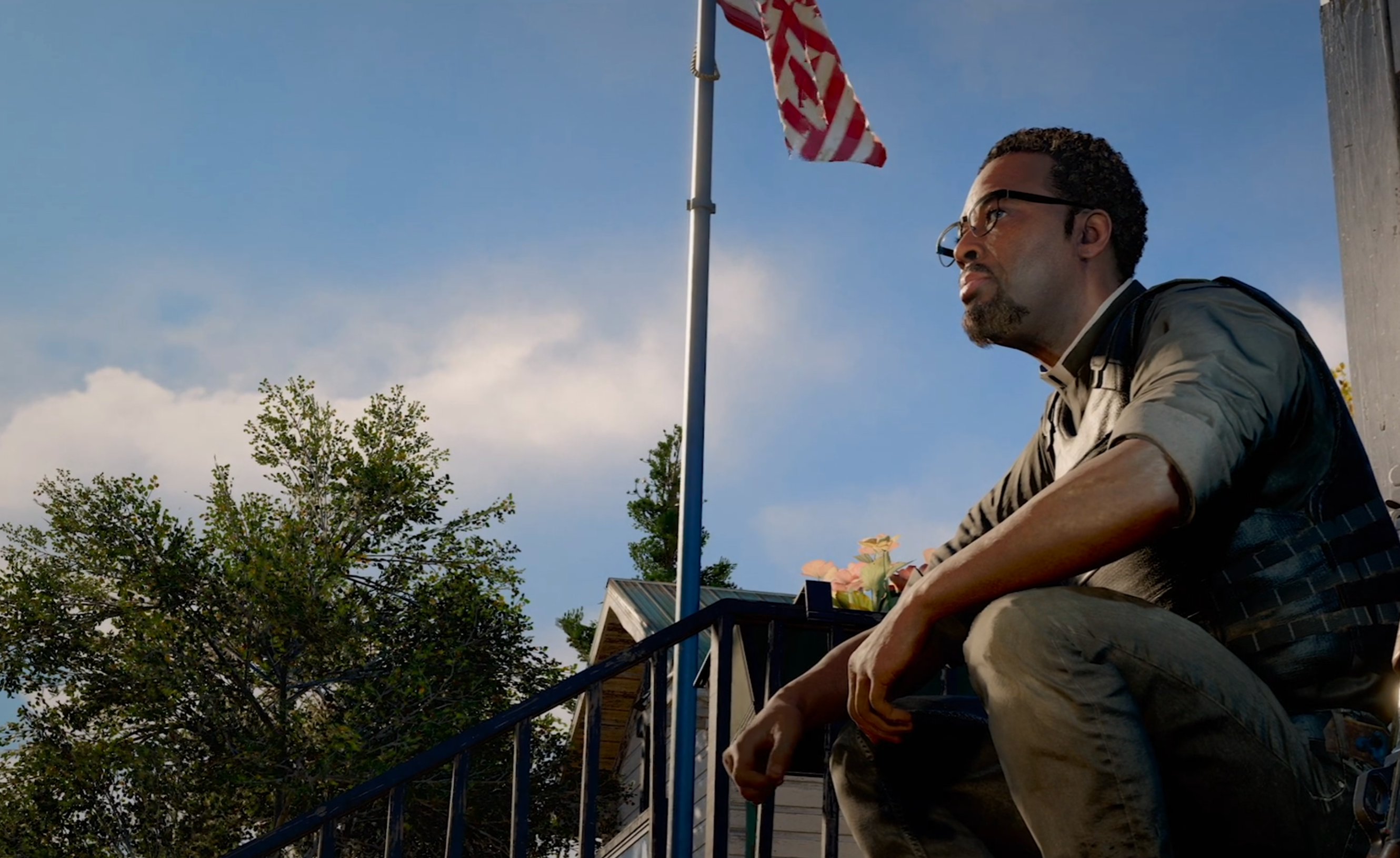As a native New Yorker for 32 years, it's hard to forget the events that unfolded on that fateful September morning in 2001. The events of that day were devastating. Lives were forever changed. The world was forever changed. Following the chaos, there was a lingering sense of uneasiness that stuck around for years after. As someone who lived, worked, and commuted in New York City, it was a feeling or sensation I would literally feel in my gut: it became a feeling of pressure.
It was the same sort of pressure that the Baby Boomer Generation felt after the Kennedy assassination. The pressure that Generation X felt during the the most tense times of the Cold War in the 1980s. It's a pressure that -- some people right now -- are feeling as they wait for the Doomsday Clock to strike twelve. It's the daily pressure or anticipation that there's a calamity that is on the way.
This is the pressure that anchors the narrative of Far Cry 5.
At a preview event in New York City I caught a glimpse into the world of Far Cry 5. "A lot of times when people 'pitch' you something about a game, they'll give you an 'elevator pitch.' They give you a whole bunch of words, I'm gonna give you a picture" is how Dan Hay, creative director on Far Cry 5 described a key art image we were shown at the opening of his presentation. Pictured in the illustration was what one would perceive as "modern man" standing on the edge of a cliff and looking down staring at impending doom right in the face.
Hay shared his own personal experience with pressure, citing what it was like growing up during the Cold War era. It was a time when all out nuclear war was on the minds of Americans following decades of tension with the Soviet Union. The feeling of a "great calamity" mounting was something Hay mentioned feeling every day when he woke up during the more turbulent times of the 50-year geopolitical standoff.
Hay noted that this similar feeling (of a great collapse on the way) in parts of the United States as a reason why now was the perfect time to bring the series to America, highlighting events like the 2016 militia standoff in Oregon as an inspiration. Hay and the rest of the Far Cry 5 creative team focused their story on separatist-like Militias and cults (like the Militia in Oregon) who feel disenfranchised by the government and are campaigning on the concept that they want "to be in control of their freedom, be in control to practice their faith, and they want to be able to protect those things with their firearms."
The characters "protecting" faith and freedoms for citizens of Hope County, Montana - the setting for Far Cry 5 - are members of a cult. Their leader "The Father" - also known as Joseph Seed - made his way to Montana to gather followers who also believe in the impending collapse of society. He and his two brothers, one a 20-year military veteran with "a very specific set of skills" (from the look of him, he's probably the muscle) and a younger brother who's a considered "the talker," run the cult like a business. The family does what needs to be done to make sure they're driving up membership, whether the people of Hope County want to participate or not.
While the cult has been spreading like a cancer in Hope County for the past 12 years, players will find that there are characters throughout the game's world who are fed up and tired of "The Father" and his hold on the region: tough people who have been pushed as far as they can go and are ready to take back what's theirs. We're told that during the game you will have to rally with these rebellious characters to build a resistance to fight back against the end-of-days rhetoric of "The Father" and his organization.
The Far Cry 5 development team put boots on the ground in Montana to not just better understand its people and the culture, but to take in all of its red-rock majesty. Rather than focusing their cult story on a real area or city, the game will take place in the team's "own version" of Montana -- in the fictional region of "Hope County." Hay made a point of highlighting the game's surroundings during the presentation by showing off a teaser clip (published this week) introducing us to inviting middle-America landscapes, which is essentially a "best of" compilation of the sights and sounds that the Ubisoft team observed during their time in Montana.
Now there's one thing to be waiting on "the great calamity," but in the interest of telling a better story, the antagonists in Far Cry 5 might not be willing to wait for a collapse to happen. No, that would be too easy and Far Cry is, for all intents and purposes, a video game that thrives in making the player uncomfortable. With that said, I think it's a safe bet for "The Father" and the rest of the gang to give the "the collapse" the gentle (or not so gentle) push that it needs to put its wheels in motion.
Our eyes-on time with Far Cry 5 was brief, yet very promising. The timing of bringing the title to the States - given the current political climate - seems right. We should be expecting to see much more about Far Cry 5's "Freedom, Faith, and Firearms" at E3 2017 in June.



